Full disclaimer, I am not in favour of writing about parts of any country that I have not been to personally. This blog is not about promoting tourism in different parts of the world, nor do I get paid to write such stuff. It is about me sharing my own personal experience using my own words as best as I can. Therefore, though there are examples like Theth and Llogara Pass that many would mention when Albania and nature are used in the same sentence, I will not be doing that myself as I was not lucky enough to see them during my own travels. With this out of the way, let us see now what Albania offers to more nature-oriented visitors of it!
Albanian Lowlands: Albanian Riviera
Albanian Riviera offers some gorgeous looking and clean beaches, that much is settled. However, beaches are not necessarily what I have in mind when I want to share some of my more “natural” expeditions in Albania, or anywhere in the world for that matter. They are often full of people, clubs, swimmers, runners, kids etc. Hardly a place where one can be somewhat alone with nature, immersing oneself in it properly. What I mean by “nature” is just that, less populated routes and spots in which one can be at peace, and observe nature at its finest!
Due to the fact that I was in Albania during a relatively hot summer, and since I went there with my mother, I did not necessarily have an appetite for too much “natural escapades,” nor did I have the time for it. However, at certain times (two to be exact) it was more or less a must for me to go out of my way (for this type of a trip) and do something “crazy.” The first time was when we went to visit St. Mary’s Monastery in Zvërnec, some 8 kilometres away from our Airbnb in Vlorë.
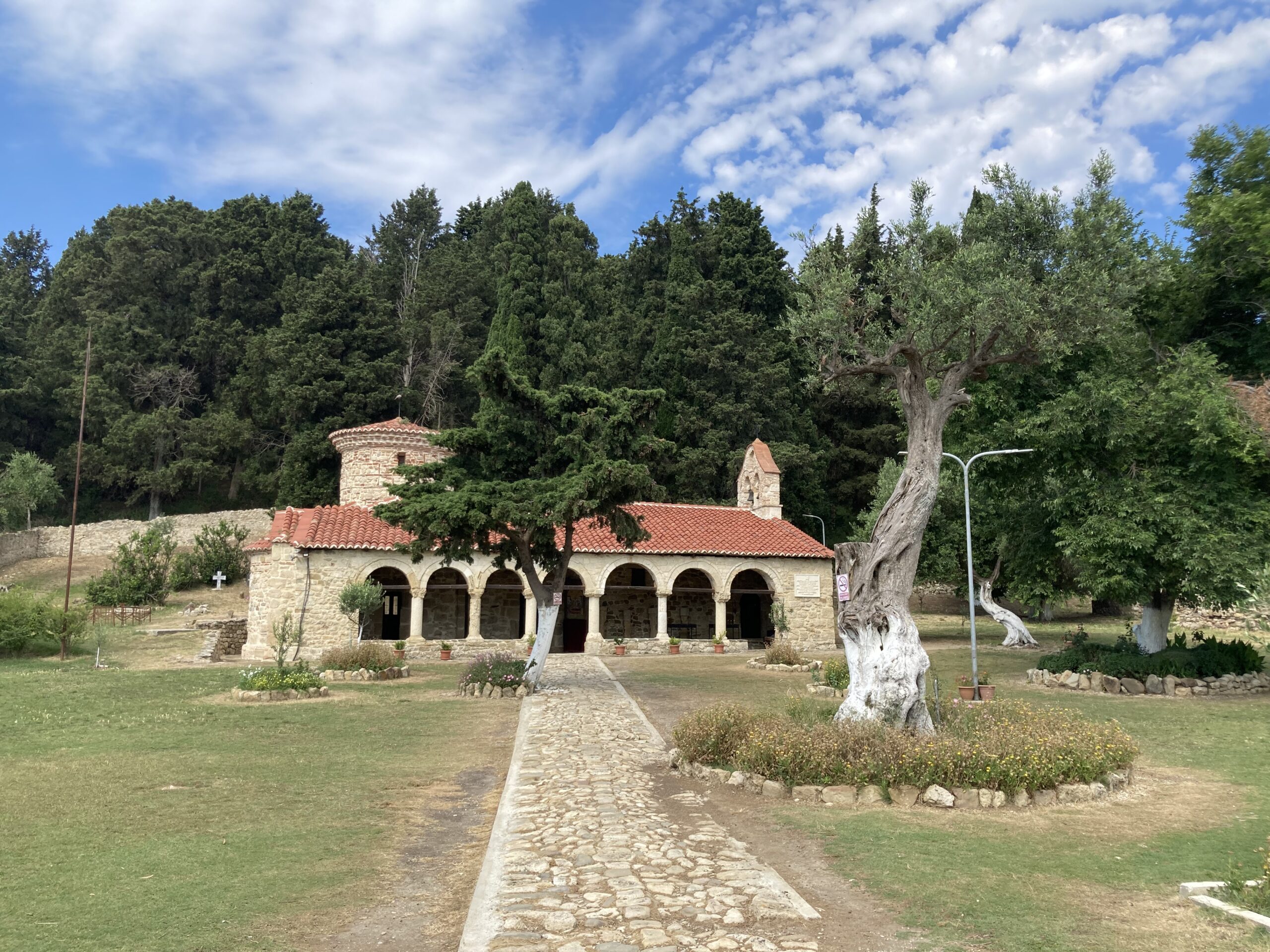
I had the audacity to assume that this would be a quick and easy adventure. We could leave the house by 7am, be there by 8.30am, and then be back before 10.30am when the sun really starts to scorch the land. We did leave by 7am, but the rest of the plan failed to work out as intended. The road that leads there is extremely beautiful, not the first few kilometres of it, but once you get into the actual nature reserve than you are met with birds singing along your trek, with trees covering half of the road to your ultimate destination. Unfortunately, where there is a lagoon, there are not only lovely birds and some wonderful views, but also copious amounts of dreadful bugs. It was those bugs that gave us the most problem, alongside with the sun, and as such do get ready for such obstacles if you intend to walk this path.
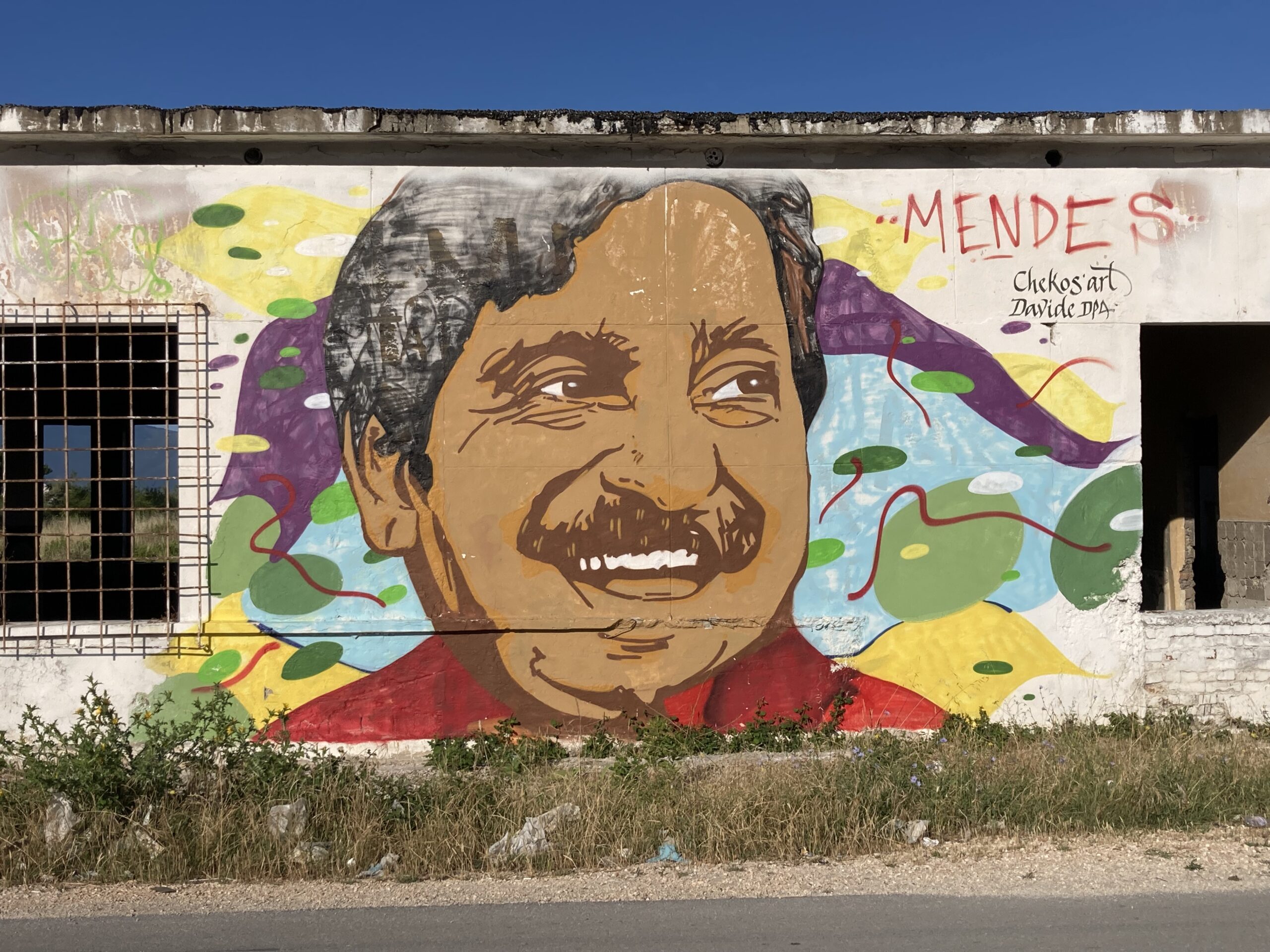
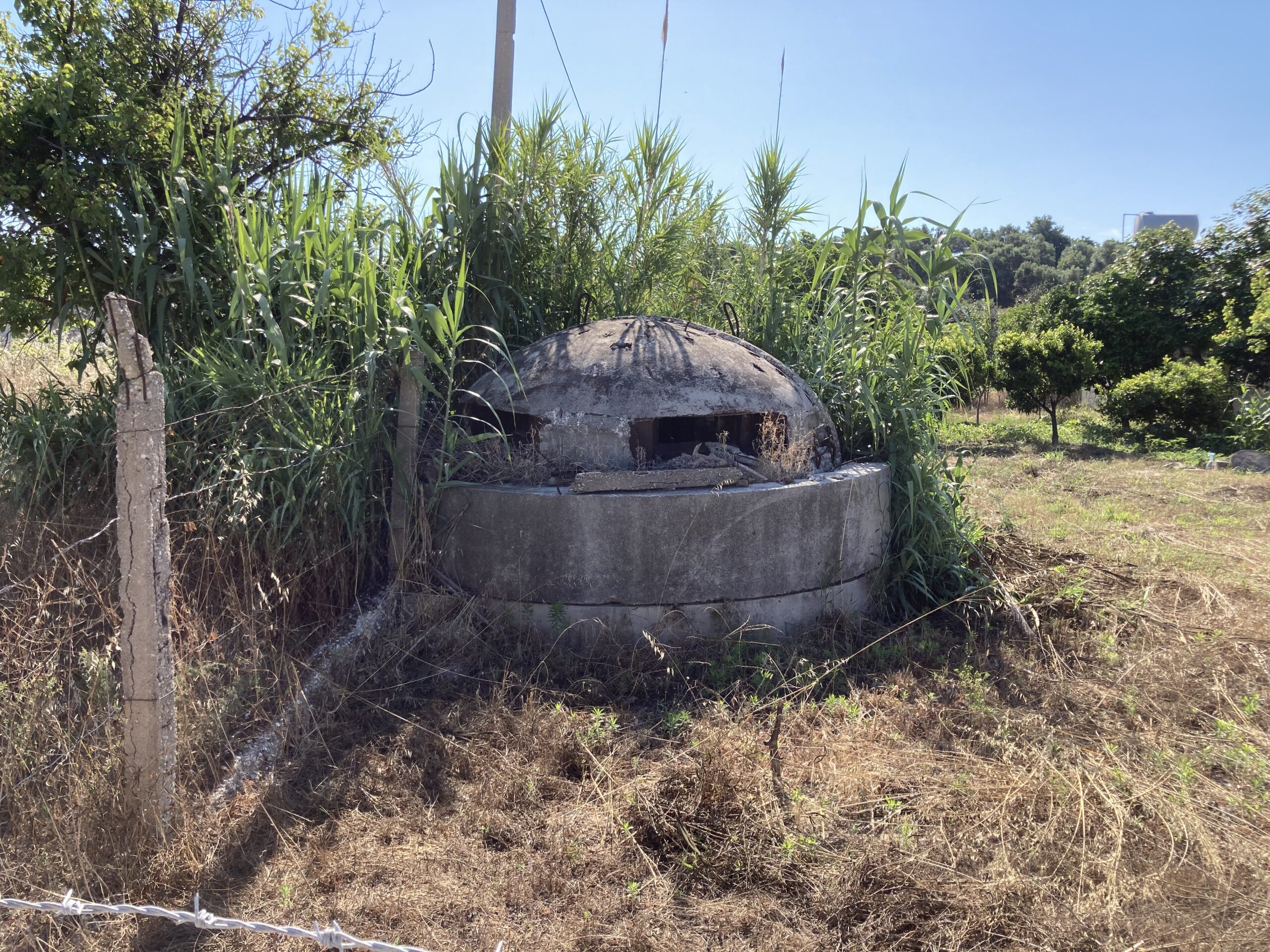
Once you reach the rather touristic village of Zvërnec, make sure to look at people’s gardens. I do not advocate peeping into people’s lives, but a quick glance will show you that some even have fully fledged bunkers from the time of Enver Hoxha! Do read THIS piece of mine to find out more about these unique Albanian gems.
Both the first and the last quarter of the whole walk, unfortunately, takes place under the sunlight, and the latter is full of bugs as was told. I do not write these lines to complain, not at all. I merely want to suggest to any traveller who wishes to undertake this journey on foot to be ready for such impediments. We have not seen anyone else walking that route, as everyone either rented a car or a bike, so it is not so often that someone shares such details about the path itself on the web. I would not necessarily say that this was the best walking route of my life, or that it is a must do, but I must say that the middle part of it was extremely enjoyable and seeing the St. Mary’s Monastery at the end of it, sitting on top of an unnaturally green island was an extremely satisfying conclusion to it.
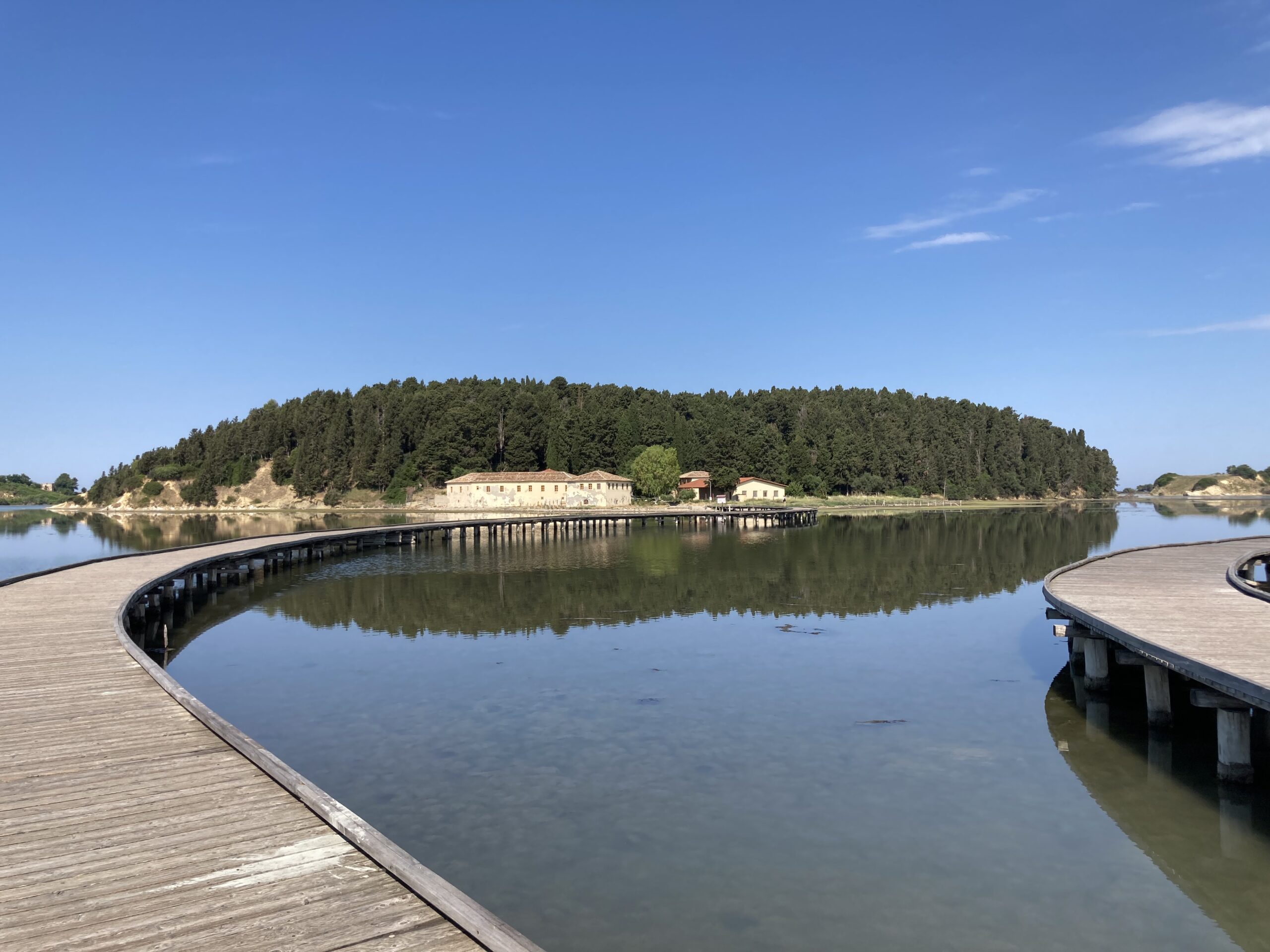
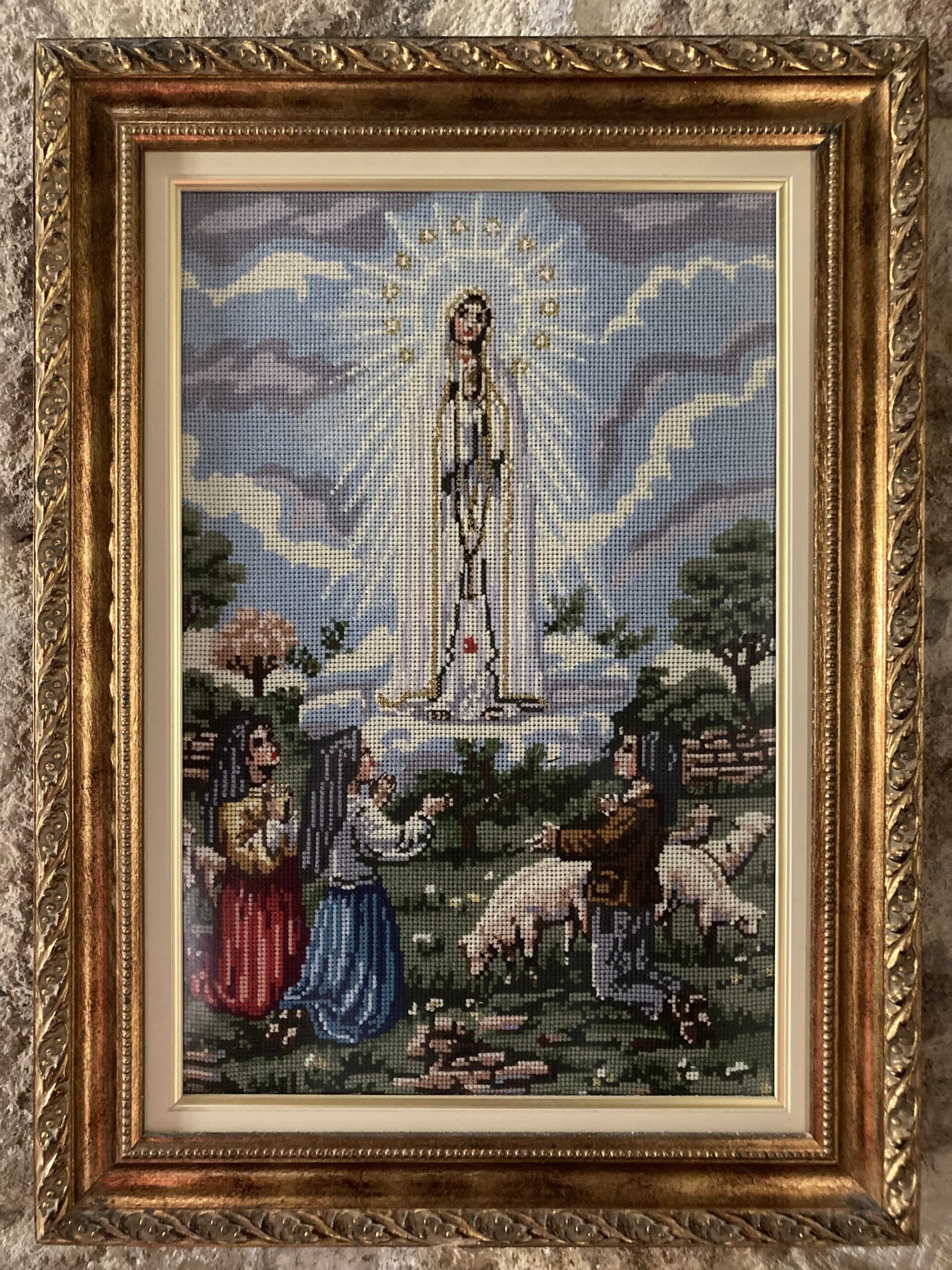
There is a lot to mention about a Medieval era Byzantine monastery but the one thing that really got to me, and what separated it from the numerous other monasteries, chapels, churches, cathedrals etc. I have been to is this wonderful art piece I found on one of its walls. I could not find out more about it, such as when it was done or by whom, but it stood out as much more “modern” than all the other pieces found in there, and with its “pixel-art” style I cannot explain just how delightful it looked in person!
Obviously, St. Mary’s Cathedral or the greater protected zone that is situated in is hardly the only option for a decent walk in the nature in the Albanian riviera. There are many other options, different archaeological sites that can be reached by walking, many other parks, and protected zones etc. This was the only one I could enjoy thoroughly myself, and thus here went my ideas about it. I would suggest all to consider enjoying this route, and if you have a bike at the ready, make sure to do it without much deliberation! On the way back we had to hitchhike back home, but I know that if I just had a bike, the whole road would be much easier to traverse, and much more fun at the same time, whilst still letting me take in the nature as I desire.
Albanian Highlands: The Albanian Mountains
Albania is surrounded by many mountains, them being one of its defining features. It is hard to think of Albania without its mountains as the isolation that they brought with themselves could account for certain points in its long history, and likely has its impacts on its culture and values today. After all, such mountains were what shielded them against many of its conquerors like the Ottoman Empire for many decades, significantly disheartening any wannabe expansionist to consider attacking the Albanian highlands.
There are plenty of wonderful routes to pick from when one thinks about these serene mountain ranges, but the one I enjoyed could be reached easily by taking the bus to Krujë from Tirana, and then “simply” climbing the mountain that overlooks it, reaching the shrine of Sari Salltik, or Sarı Saltuk as he is known in Turkish. The whole hike nets in a 600-meter elevation, though that is from the beginning of the official route. You will also have to “climb” a bit to get even there, meaning that a 700-meter elevation in an hour or so of walking is more likely.
It is not an easy climb by any means, and it can be considered a pilgrimage route of sorts since atop the route one can find a shrine dedicated to Sari Salltik, a devout Alevi Turkish dervish that was sent to the Balkans to spread Islam in 13th century. Mind you, that is earlier than the Ottomans themselves annexing one Balkan state after the another, hence Islamic scholars beat the Ottomans to the Balkans by quite a bit. It is not clear whether this is the real “tomb” of Sari Salltik, as there are many contenders to that same fame, however, what is clear is that it is in fact a religiously important destination for Muslims of all sects, with an emphasis for those that are regarded as Bektashi Sufi.
To be fair, his real tomb is likely in Babadag, Romania, though certain parts of his body may or may not be spread to some other resting places all around the Balkans and Anatolia. No matter the case, and no matter what your own take on religion may be, the road that leads to the shrine is fascinating nature-wise and offers some of the best views that Albania has to offer. I ended up taking quite a few photos during my own “pilgrimage” there and let me use some such visual aid to give you an idea of what awaits those that wish to undertake this much recommended but somewhat difficult route!
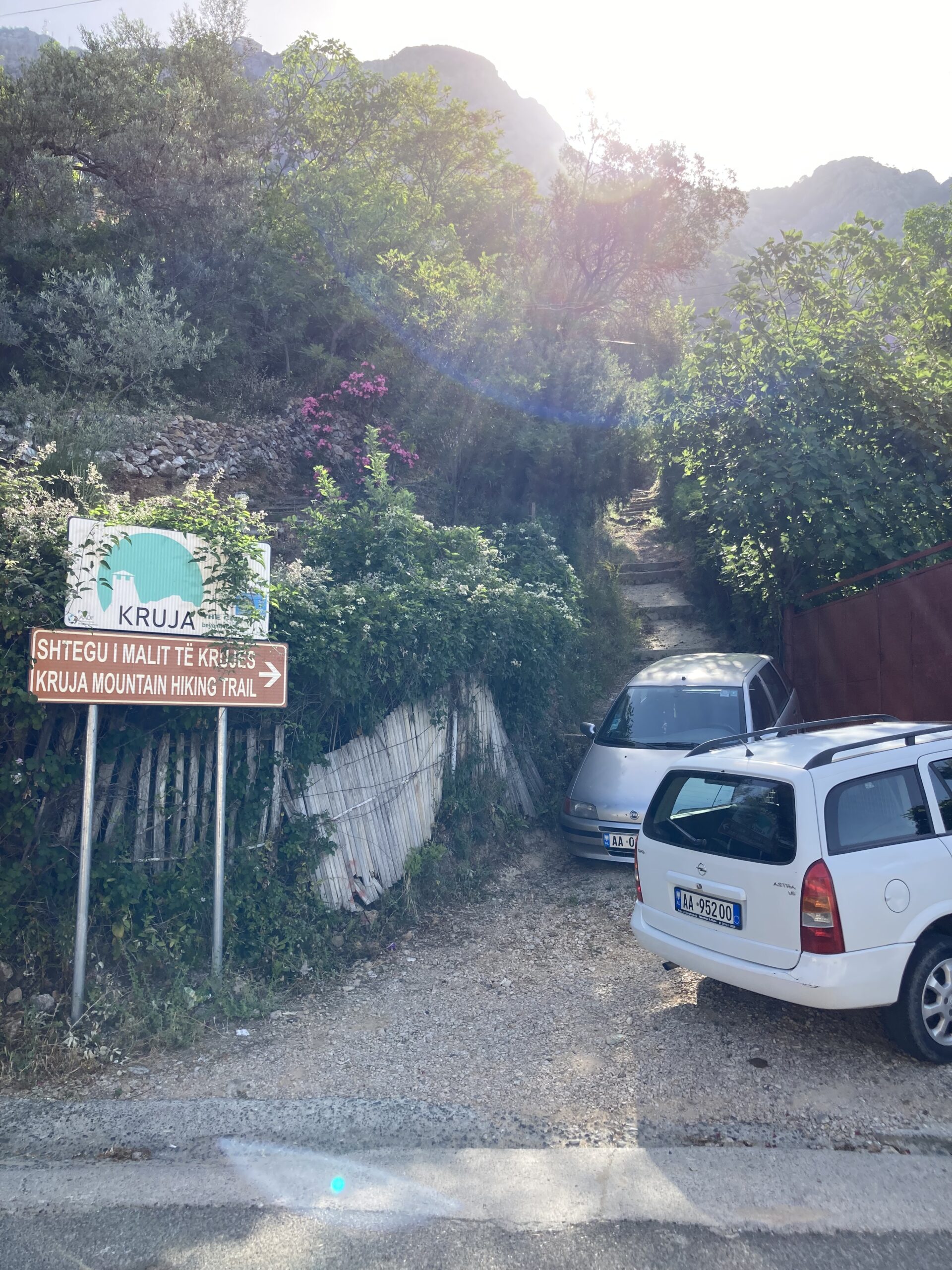
The full name of the route is “Kruja Mountain Hiking Trail” and before you ask, yes, the official entry is also this small stairway that leads upwards in between two lovely gardens.
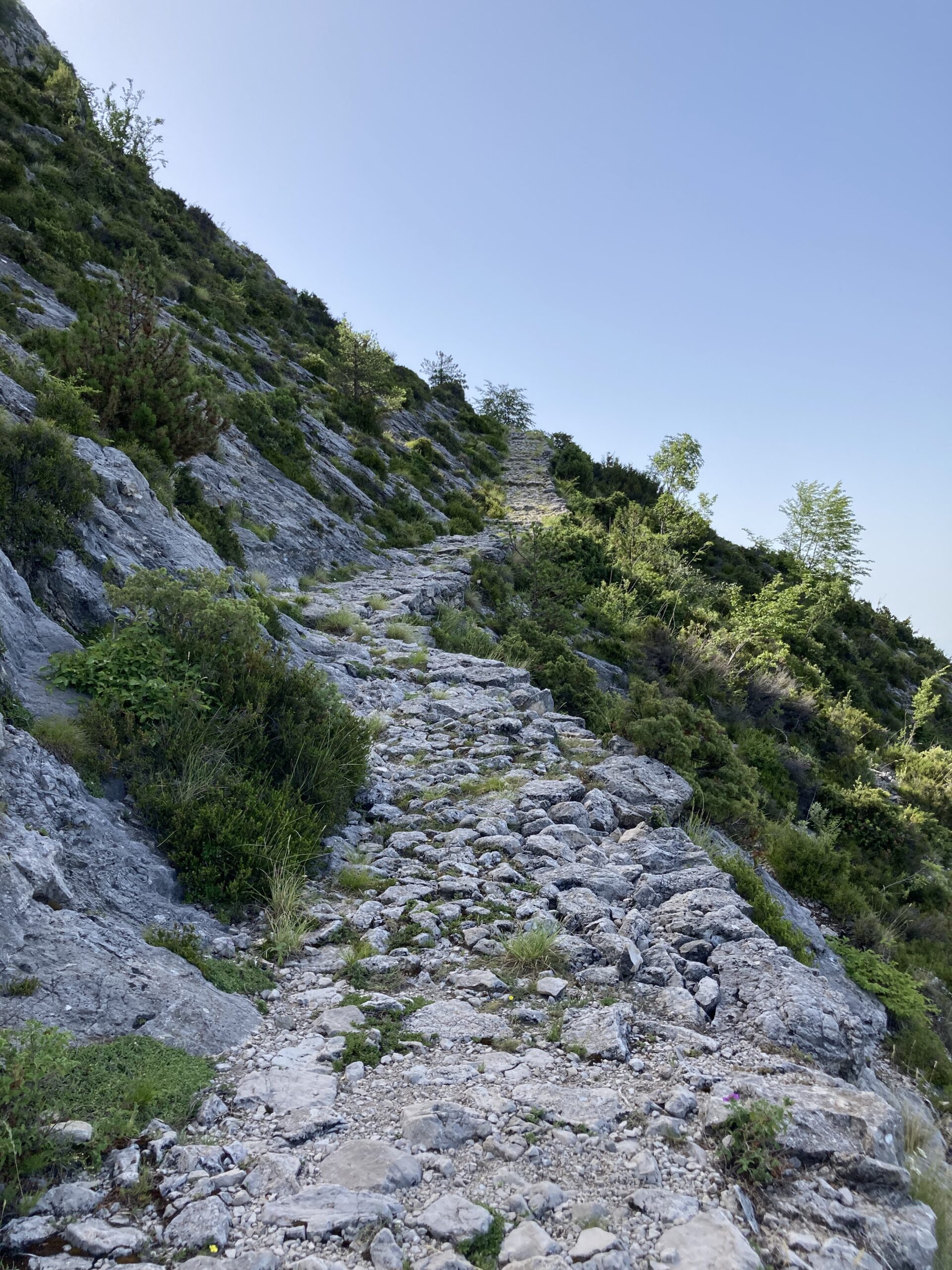
Some photos on Google Maps etc. may deceive you into thinking that there is an actual stairway that leads straight into the shrine but that is not the case. The actual road is an ancient one and is often in a poor shape today. Most of it is covered with rubbles and rocks, and at certain parts it becomes quite narrow and even dangerous. In fact, the way down took longer for me than the way up just because I did not want to step on the wrong stone and fall down, either to a gruesome death or to a not-so-gruesome but definitely shameful little “roll” on the ground.
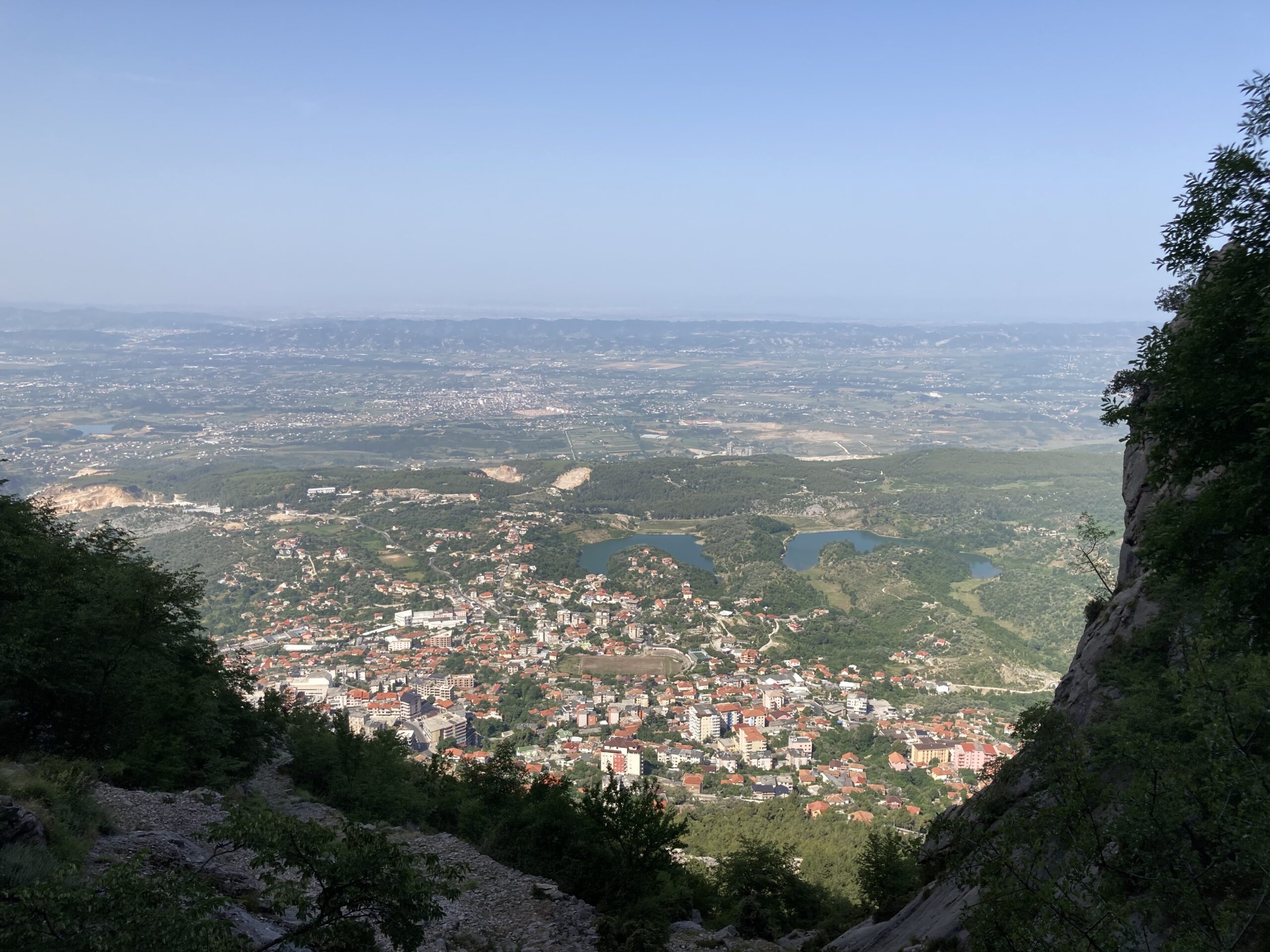
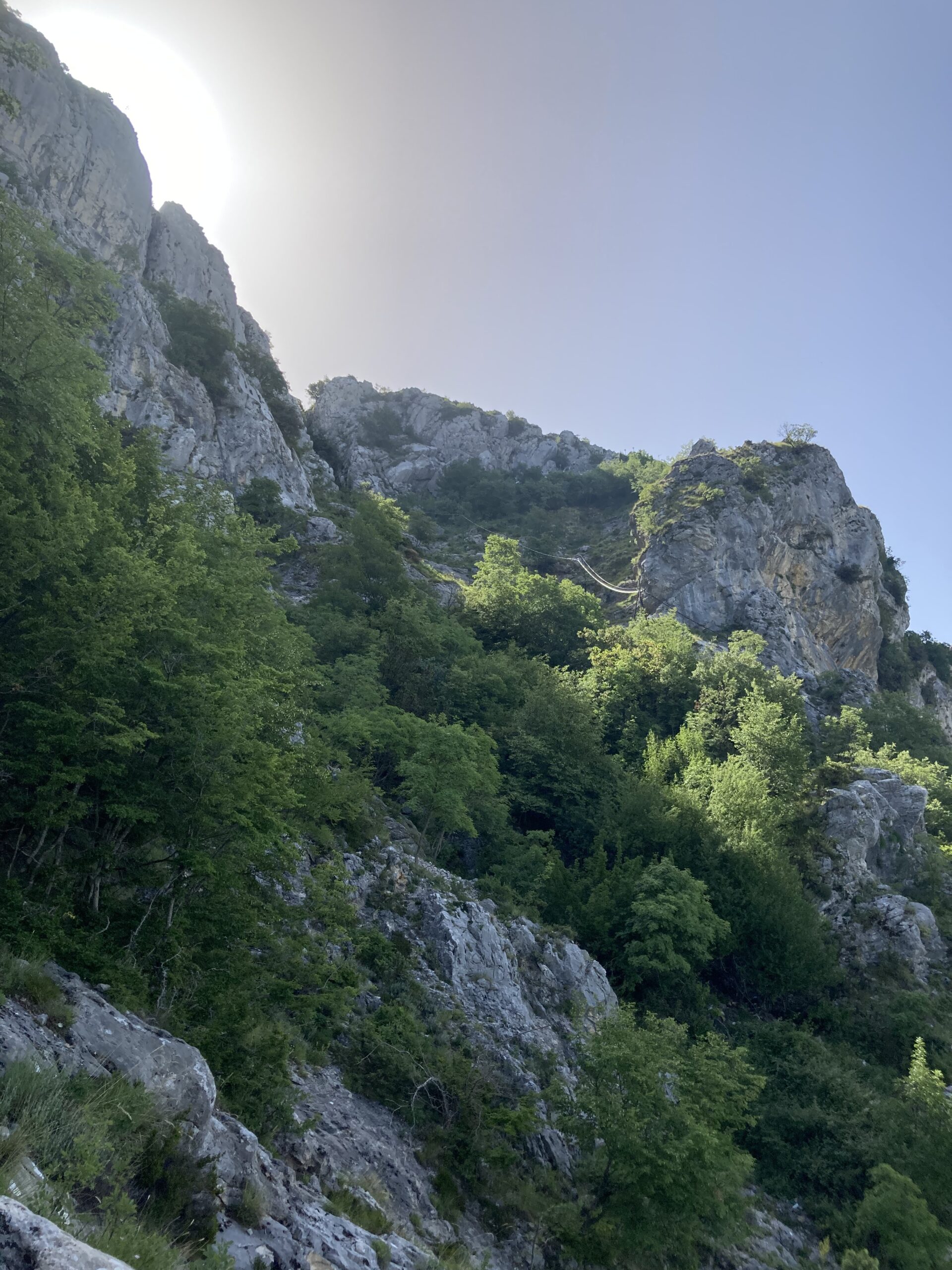
Last two hundred meters or so of the trek gets steeper, significantly. By the time you can see the shrine, you are greeted with a rather demanding climb. However, an even better view is just around the corner so let us get a move on!
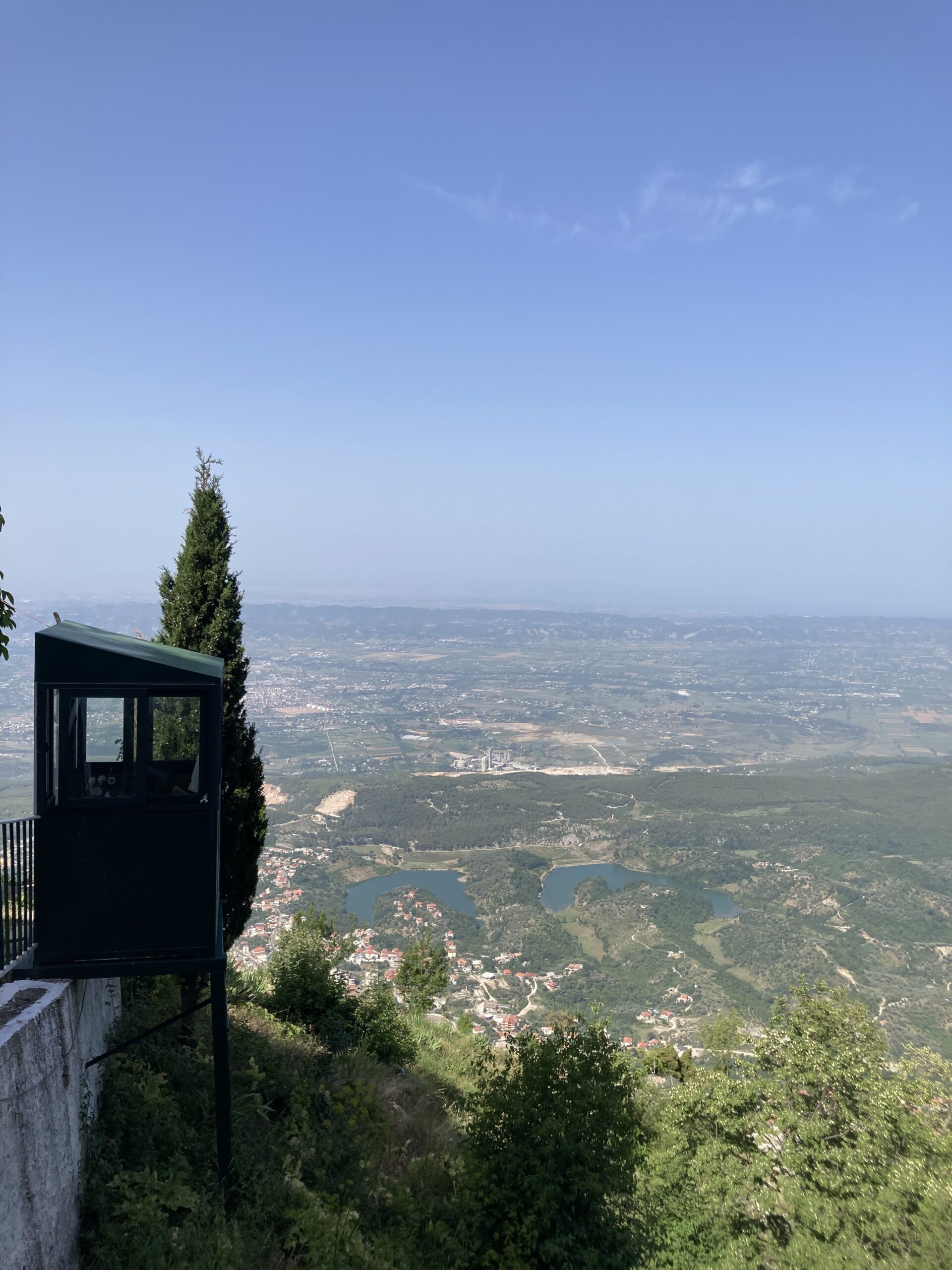
Not the best photo of what can be witnessed atop this lovely trekking route, but a good one, nonetheless. In properly illuminated days you can easily see Tirana and Durrës in details from up here, not even mentioning the upper and lower Krujë. I have heard that it is possible to even see Shkodër and its lake as well, and thus Montenegro, though I have my doubts about it. Let me know if I was just too unlucky to have been there on such a “foggy” day.
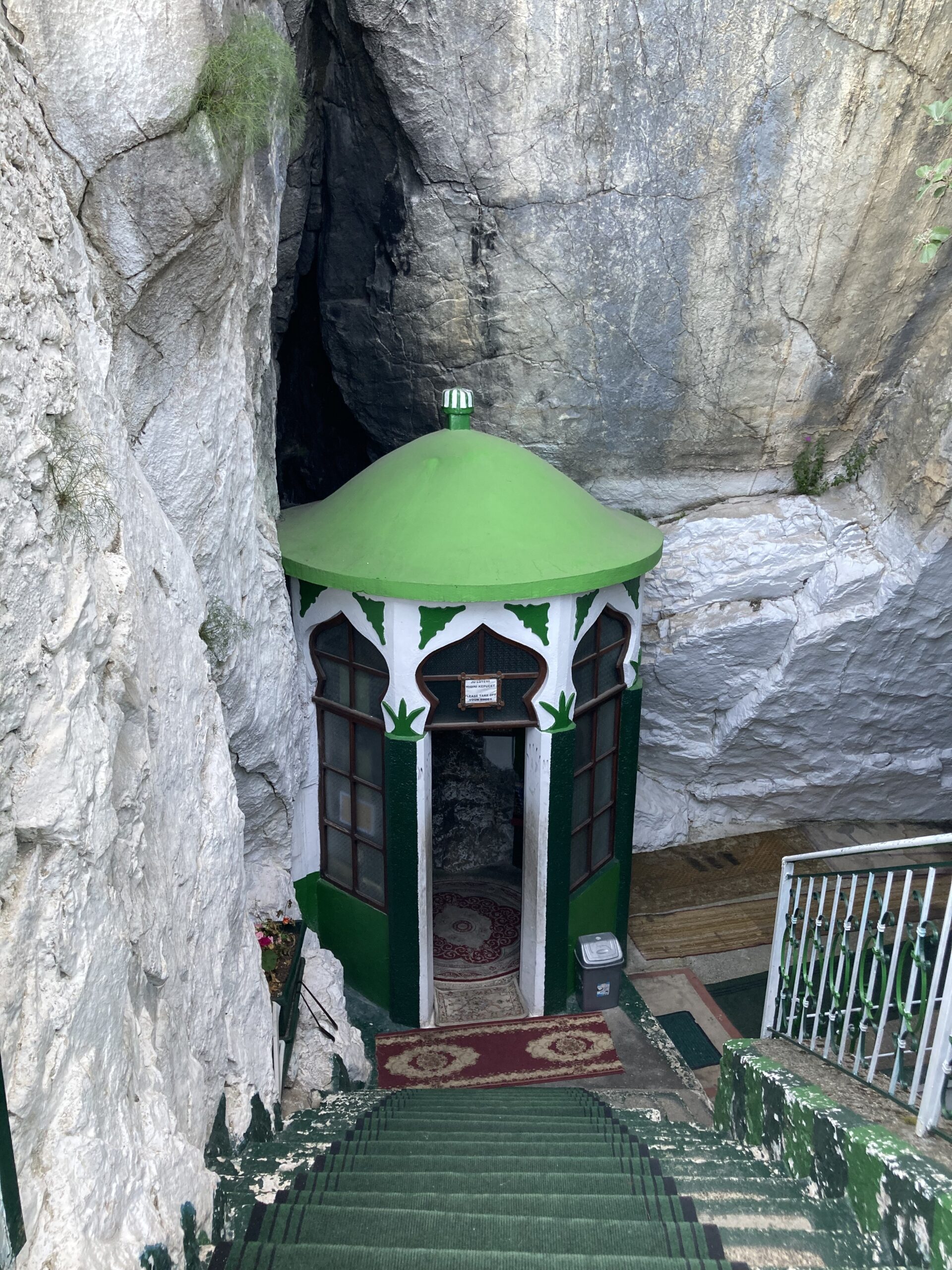
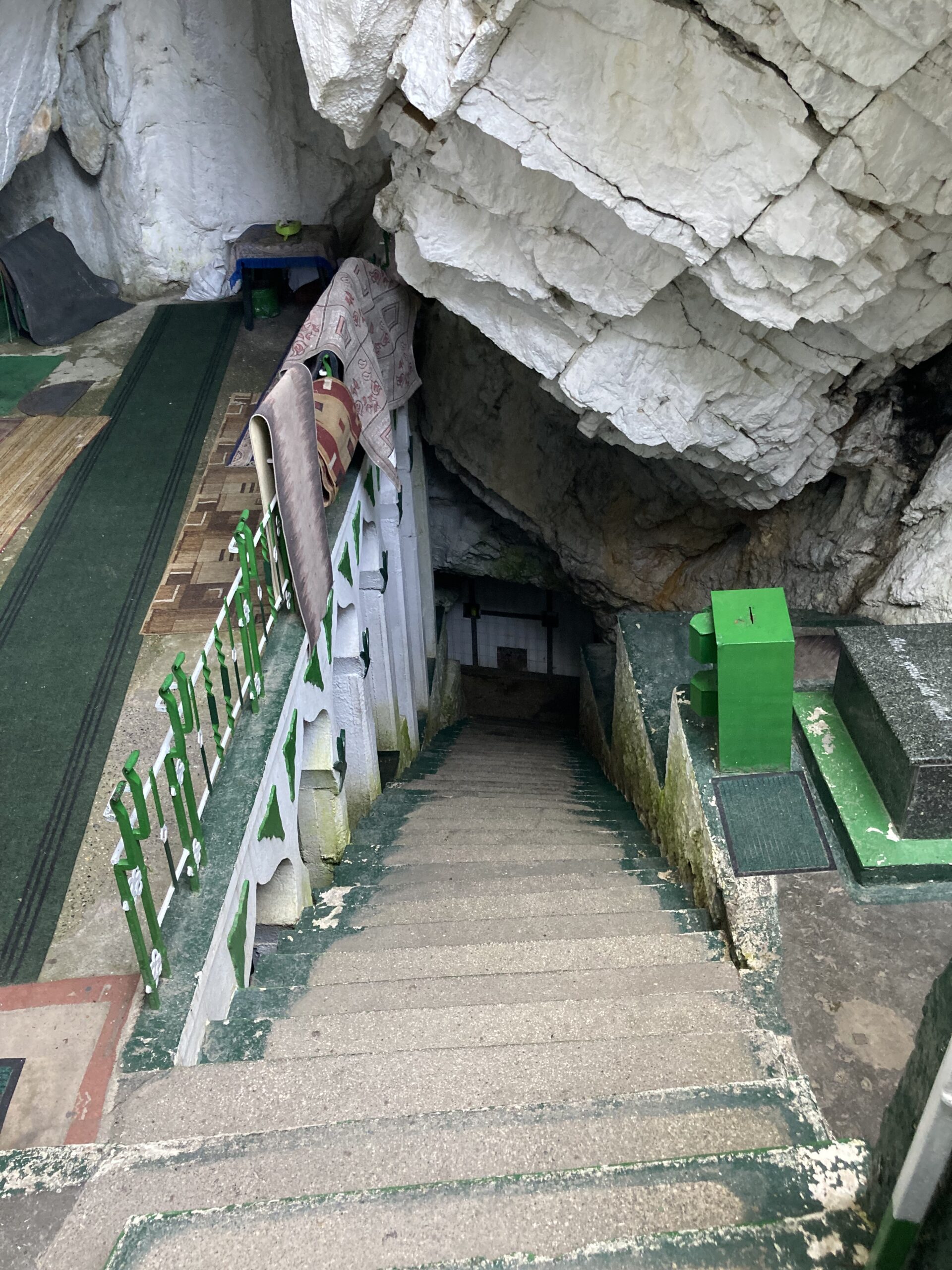
Just look at this stairway. You can see the alleged tomb of Sari Salltik to the right, and there are many other tombs that leads down below to what seems to be a faucet of sorts, which kept dripping some water when I was there. Suffice to say, as the only one up there, and no one else in sight, I preferred not to dive deeper… It was super chilly in the cave system as well, so that combined with me truly not wanting to go back up these stairs in total darkness made it easier for me to decide not to venture further. I am glad that I did not though, as by leaving the shrine a bit earlier, I managed to meet a wonderful French gentleman, who apparently hitchhiked all the way to Istanbul from his town in northern France in the summer of 1972. Here I thought I was having a wonderful time exploring the world on my own, and bam, a legendary traveller appears out of nowhere! Kudos to him, both for his excellent companionship, and for being much faster in both climbing up and down the mountain than me, someone a third of his age…
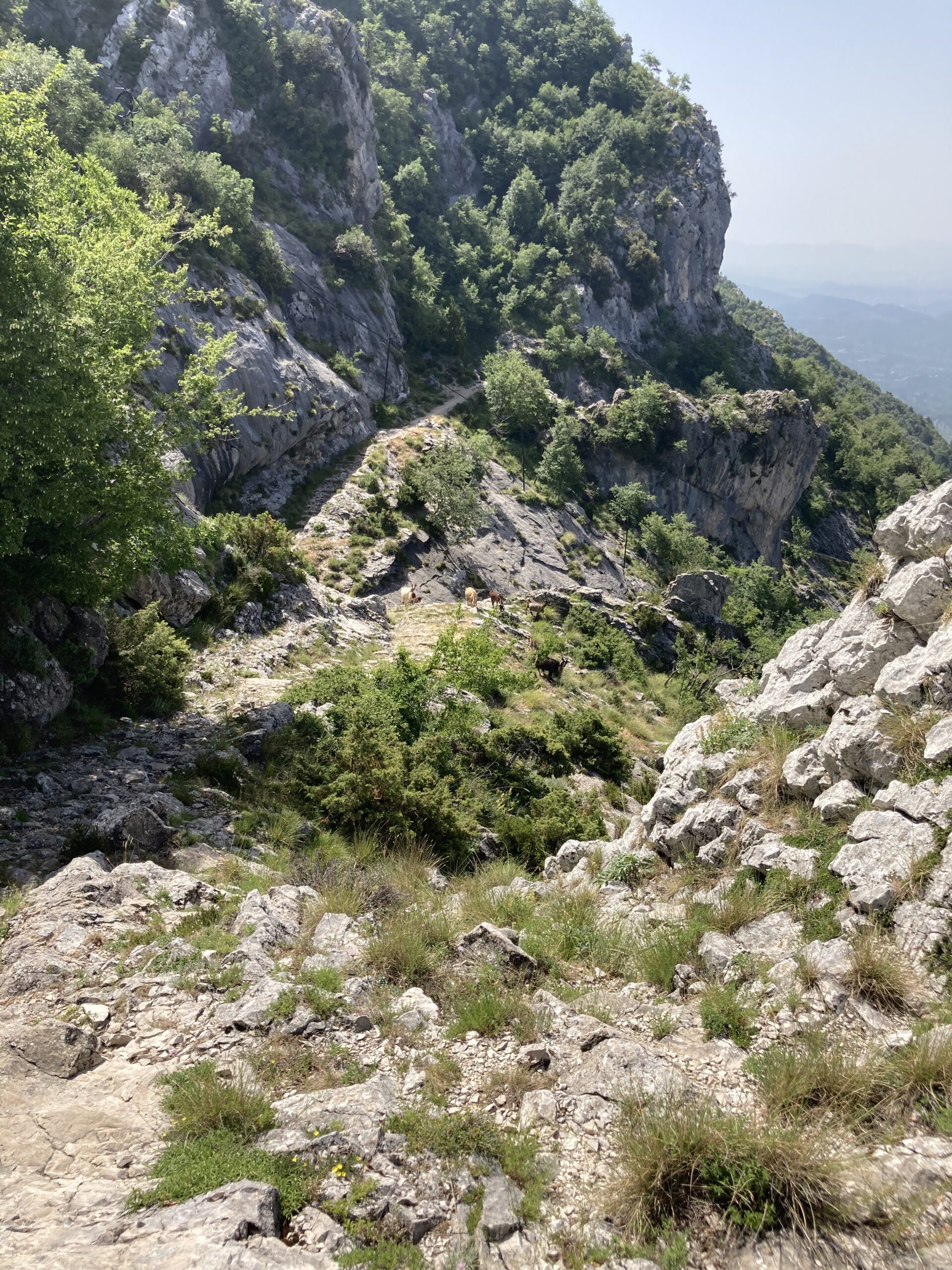
Other than a French couple going up with their dogs, I only managed to see these lovely goats on my way back. I waited for them to pass on using the road without disturbing them, but they had other ideas, like showing off their much superior climbing skills by simply “walking up” to the mountain in ridiculous angles.
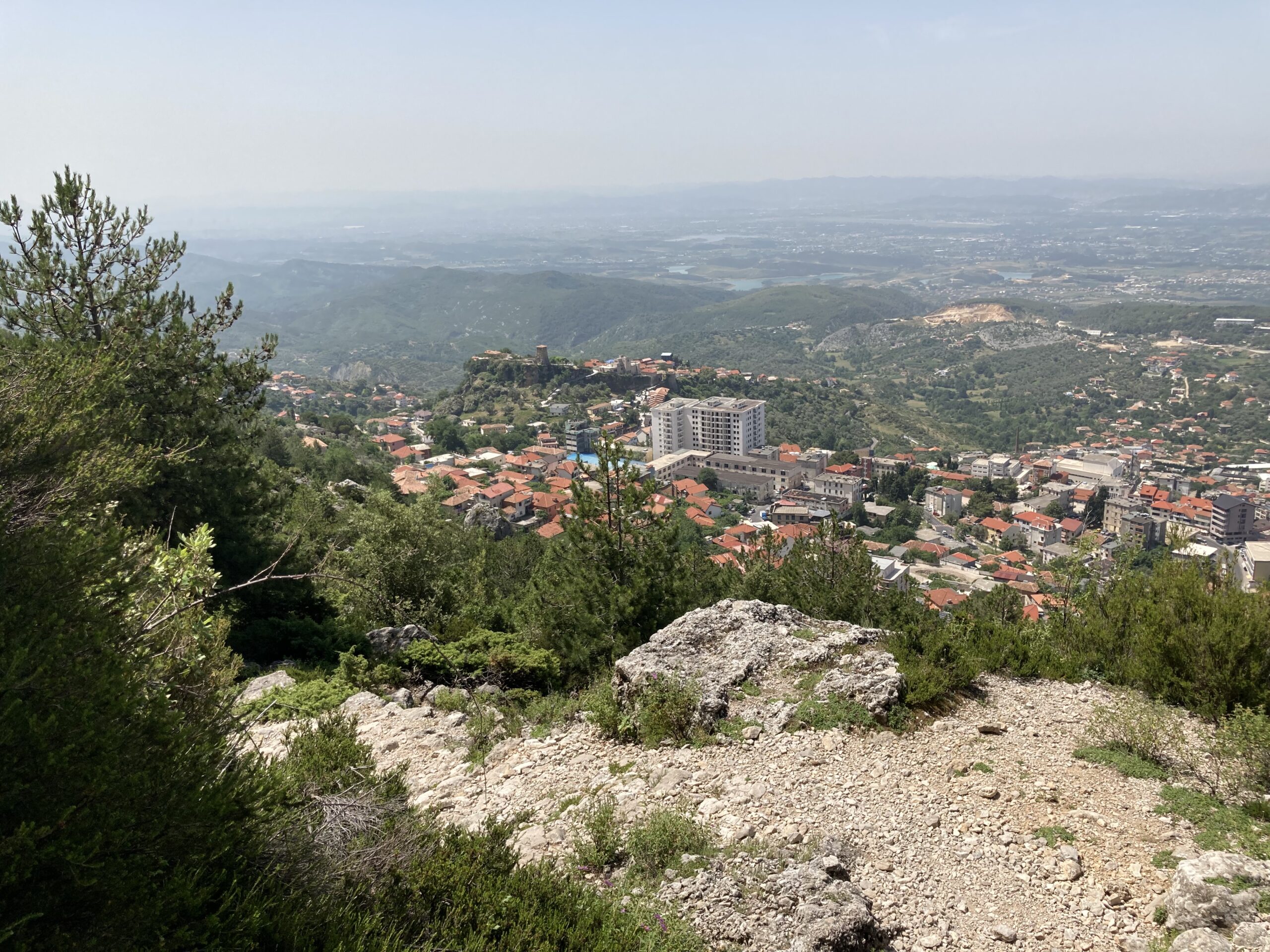
It was at this point when I realized that I made it! After around two and a half hours of moving up and down, taking photos and videos (likely to prove that I managed to do it with little to no prior experience of hiking or doing any sports for that matter), and just taking in the nature, I was back to Krujë to enjoy what else it had to offer!
It is hard not to recommend this hiking trail to everyone. No matter whether you are religious or not, into hiking or not, into mountains or not, into goats or not, I am quite certain that you can find something to enjoy about it. It was not necessarily a “transformative” experience for me as some others would comment about it, but the whole journey was one of the most satisfying physically demanding tasks I have ever carried out in my life. It also made me realize that I had to hike more in the future, so perhaps in that regard it was quite transformative.
If, or more like when, I go back to Albania, hiking more in its pristine environments will be one of my primary goals for sure, and it can be for you too if you decide to travel to that beautifully mountainous country by the Adriatic Sea! If hiking or just walking in general is not your thing, and you prefer to stick to museums with their nice air conditioners, read THIS work of mine to find out about what Albania has to offer in that department.
